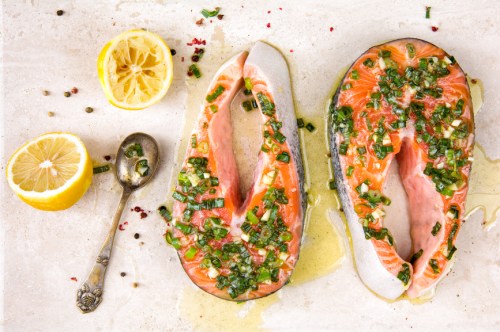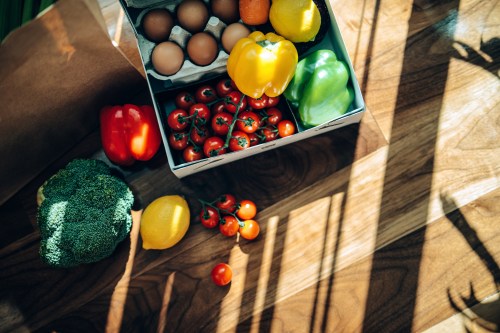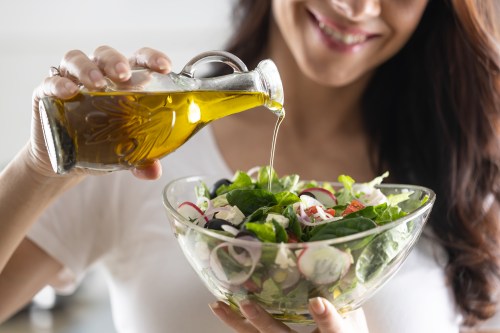Protein is a powerful macronutrient that’s required for metabolic function, stable energy and blood sugar, and for repairing, building, and strengthening muscles as a source of immediate fuel for workout recovery—and more. It’s important to make sure you’re consuming enough of the healthier proteins throughout the day and snacking every few hours, especially if you lead an active lifestyle or exercise regularly.
Experts in This Article
registered dietitian and consultant with Balance One supplements
“When you’re deficient in protein, your body begins turning to muscle for fuel and amino acids, which includes the heart muscle, and in turn decreases muscle mass and strength and puts your heart at risk for heart damage in the future,” explains Trista Best, MS, RD, LDN.
How To Choose Proteins for a Healthier Heart
Nutritional value depends on several other factors, too, which can change how heart-healthy your meal or snack is and either enhance or hinder protein’s benefits.
For example, a lean, generally healthy source of protein, when in its natural state, might become more or less heart-healthy based on cooking technique, other flavors and ingredients that complement it and portion size.
Yet, once you’re aware of how you might be compromising nutritional value, you can easily integrate a couple of simple protein swaps for a healthier heart into your daily meal plan and reap all those heart-healthy rewards.
In general, you should monitor sodium and saturated fat content and avoid trans fat, most commonly found in processed, packaged goods, like snack foods and baked goods. “They can increase blood pressure, oxidative damage, and cholesterol,” says Best.
Here are five protein swaps for a healthier heart, where you won’t skimp on protein or compromise satisfaction and flavor.
Healthier Proteins To Improve Your Diet
1. Beef Stir-fry for Tofu Stir-fry
“Cuts of beef that are high in fat have a negative impact on heart health and contain saturated fat, which increases the risk of clogged arteries and triglycerides and. often raises LDL (bad) cholesterol and lowers HDL (good) cholesterol,” says Best.
Any beef and broccoli or stir-fry recipes you might enjoy will work just as well with a tofu substitution, which has plant-based protein, less saturated fat and benefits for your bone and muscular health and immune system.
“Tofu is a soy based plant protein that is often a replacement for beef or eggs, and it’s lower in saturated fat and higher in beneficial nutrients like iron and vitamin D, with more protein per serving than other plant foods,” says Best.
Use firm tofu and mix with vegetables, especially green ones, like kale, spinach, broccoli and Brussels sprouts, as well as colorful starchy ones, like carrots and sweet potato. And keep the sauce light and low in sodium and sugar, too!
2. Beef Patties for Salmon Cakes
Salmon is a rich source of protein, and it’s also anti-inflammatory, thanks to its heart-healthy fat content. Salmon contains omega-3s, which are clean fats that lower inflammation and risk for various disease, and salmon has pretty low mercury levels, so it’s safe (and encouraged!) to consume two or three servings a week.
“Replacing proteins high in saturated fat with those high in omega-3 fatty acids can be beneficial for heart health, as they lower inflammation in the body and ultimately reduce stress that is placed on the heart and other organs,” says Best.
This is particularly true and common when stress is chronic, where low-grade inflammation persists at higher levels on a routine basis. Plus, salmon also contains vitamins B6 and B12, and vitamin D—the latter being particularly scarce in the diet, with only a few options to choose from that have a rich dose.
Use salmon for protein swaps for a healthier heart when you’re grilling or meal prepping burger patties and cakes for the week to use as protein toppers for salads, sandwiched between bread or as an easy main course alongside greens and fiber.
3. Pork Sausage Links for Grilled Chicken
Poultry provides a low fat, animal-based protein for a heart-healthy replacement for pork and beef. “Many cuts of pork and beef are high in saturated fat,” says Best. Those sausage links and patties you eat with scrambled eggs for breakfast?
They’re likely heavy in saturated fat and sodium, and might be heavily processed, too. (Always check labels at the store and go with brands that have a minimal ingredient list and are free from nitrates and other additives and are lower in sodium.)
The same goes for chicken wings and breaded recipes, like cutlets. “How it is prepared is still important, however, and chicken shouldn’t be fried if you are attempting to lower your risk of heart disease,” Best says.
Instead, swap pork for chicken for a healthier heart and choose lean, chicken breast or rotisserie chicken, instead. If grilled, dice it and enjoy inside a healthy breakfast sandwich, with eggs and whole grain or wheat toast, or even stuffed inside a halved avocado.
4. Chicken Salad for Tuna Salad
Much like salmon, this omega-3 rich fish is versatile and works well in dishes that are traditionally made with chicken and beef. Think: casserole and deli-style salads for lunch. For example, replace chicken with tuna when making a deli salad for lunch.
“Tuna is also rich in B vitamins and vitamin D, and it also offers light options, which are lower in mercury,” Best says. So, you’re increasing heart-healthy fats with this swap, and increasing overall nutritional value while maintaining sufficient protein, too.
Just be careful with mayonnaise—it’s thick and creamy and high in saturated fat, and many deli-style spreads and salads are drenched in it. Use a little bit if desired, or swap for olive or avocado based oils and dressings instead, which further promote heart health.
5. Beef Burritos for Bean or Chickpea Burritos
Plant-based protein swaps for a healthier heart include beans, peas and legumes, such as lentils, black beans and chickpeas, for example. beans, peas, and lentils. A tip? If you’re worried about not getting in all nine essential amino acids, combine plant proteins or choose quinoa, which is a gluten-free grain that actually does offer all nine by itself.
This is pretty easy to do when building a burrito. “Using beans and rice in a meal will provide the consumer with a complete protein without needing an animal-based protein,” says Best.
For more vegan and vegetarian protein sources, watch the video below:
Sign Up for Our Daily Newsletter
Get all the latest in wellness, trends, food, fitness, beauty, and more delivered right to your inbox.
Got it, you've been added to our email list.










